Why do you need an E-commerce Website Design?
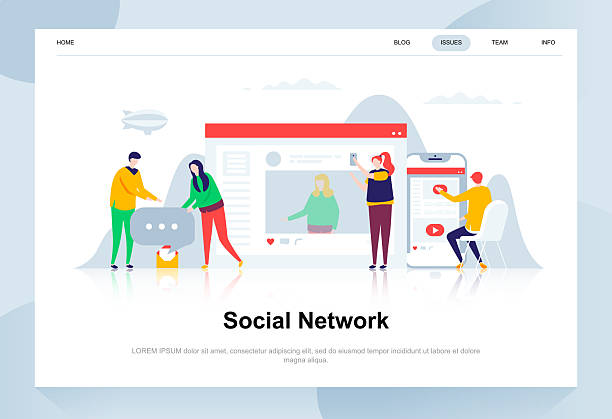
In today’s world, online presence for any business is more than an option, it’s a necessity.
#ECommerce_Website_Design is no longer just a trend, but the foundation of modern #ECommerce.
But why exactly do you need a store website? Is selling through social networks not enough? The answer is that a dedicated website provides complete control over your brand, products, and customer user experience.
While social platforms have limitations, your site is your digital canvas where you can implement whatever you have in mind.
This means more freedom in displaying products, managing inventory, and implementing unique marketing strategies.
Furthermore, having a site instills a sense of credibility and professionalism in customers, which ultimately leads to increased trust and sales.
Are you ready to take your business to the next level? Do you want to expand your reach beyond geographical boundaries? Designing and launching an online store is a gateway to these limitless possibilities.
This investment not only brings financial returns but also enhances your brand’s reputation in the long run.
Are you annoyed by losing customers who visited your site to buy?
Rasawweb is your specialized solution for a successful online store.
✅ Significant increase in your online sales
✅ Building trust and professional branding among customers⚡ Get free consultation from Rasawweb experts!
Key Features of a Successful Online Store
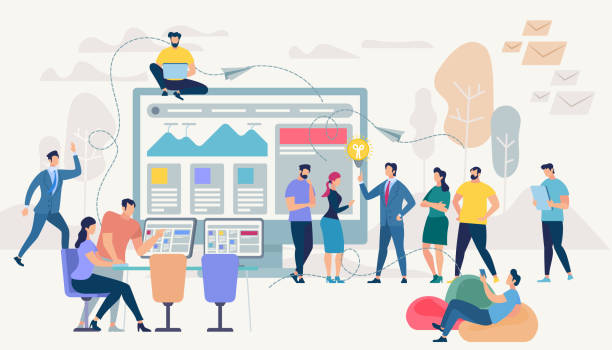
A successful e-commerce website design is not limited to aesthetic appeal; it must also be technically powerful and efficient.
The first and most important feature is #Smooth_User_Experience.
Customers should be able to easily find products, add them to the cart, and complete the payment process without any issues.
High loading speed, responsiveness across various devices, and intuitive navigation are crucial factors in this regard.
Another feature is a strong Content Management System (CMS) that easily allows adding, editing, and deleting products, managing orders, and updating content.
Another important part is advanced security features.
Since financial and personal customer information is exchanged on your site, using an SSL certificate, secure payment gateways, and adhering to privacy protocols is essential.
Also, the presence of internal marketing tools such as discount systems, coupons, and the ability to create email campaigns significantly helps increase sales.
Finally, a professional e-commerce website design must have the ability to integrate with web analytics tools (like Google Analytics) so you can monitor site performance and optimize your strategies based on data.
This set of features forms the foundation of a stable and profitable online store.
Step-by-Step Process for Designing Your Online Store
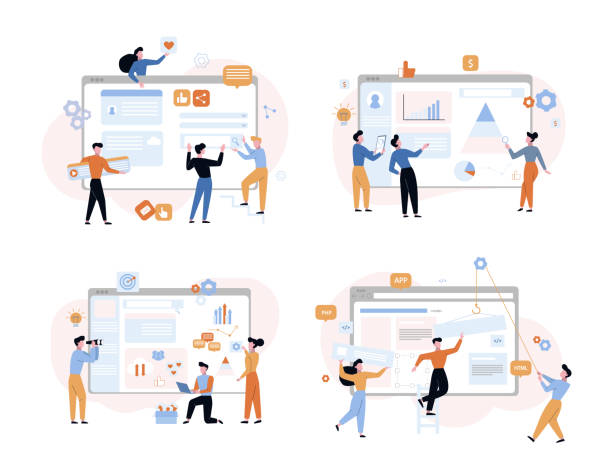
E-commerce website design is a multi-stage process that requires careful planning.
#The_first_step is #Needs_analysis and setting goals.
What products do you sell? Who is your target audience? What is your budget? Answering these questions clarifies the design path.
The second step is choosing the right platform. Do you use ready-made platforms like WooCommerce, Shopify, or Magento, or are you looking for a custom solution? Each has its advantages and disadvantages that must be weighed according to your needs.
The third step is designing the User Interface (UI) and User Experience (UX). In this stage, the site’s appearance, page layout, color scheme, and fonts are designed to be both beautiful and user-friendly.
The fourth step is development and programming, which includes implementing codes, creating a database, and integrating various functionalities.
The fifth step is adding content, including product descriptions, high-quality images, and engaging textual content.
The sixth step is testing and debugging to ensure the correct functioning of all sections and resolve potential issues.
And finally, launching and publishing the site.
These are the fundamental steps of a successful e-commerce website design project.
Comparison Table of Popular E-commerce Website Design Platforms
| Feature | WooCommerce (WordPress) | Shopify | Magento |
|---|---|---|---|
| Complexity Level | Medium (requires WordPress knowledge) | Easy (hosted) | High (requires specialist developer) |
| Initial Cost | Low (hosting and domain only) | Monthly (various plans) | High (implementation and maintenance) |
| Flexibility | High (with plugins and coding) | Medium (with apps) | Very High (Open Source) |
| Support | Large user community | Good official support | Developer community |
Choosing the Best Platform for Your Online Store
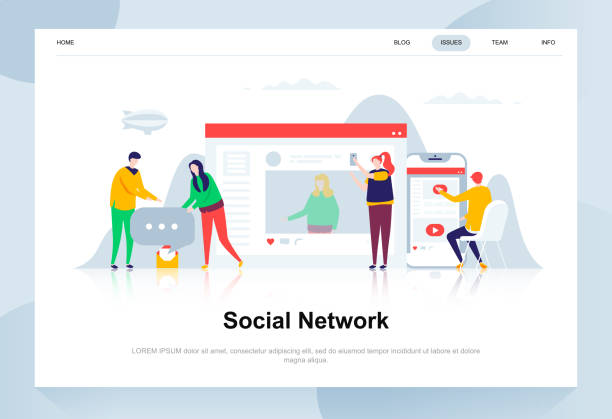
Choosing the right platform for e-commerce website design is one of the most crucial decisions you will make.
This choice not only affects the cost and time of setting up your store, but also its future growth and development capabilities.
#E-commerce_platforms are generally divided into two categories: #Hosted_platforms (SaaS) like Shopify, and #Open_Source_platforms like WooCommerce (WordPress) and Magento.
Shopify is ideal for small to medium-sized businesses looking for a quick and easy setup.
This platform covers all technical aspects, but in return, offers less flexibility in deep customizations and involves fixed monthly costs.
In contrast, WooCommerce, a plugin for WordPress, offers very high flexibility.
You have full control over your site’s host and code and can customize it however you wish.
However, this freedom requires more technical knowledge for setup and maintenance.
Magento is also a powerful open-source platform designed for large and complex online stores with high traffic and product volumes.
This platform has advanced features but requires very high technical expertise and a significant budget for implementation and management.
Platform selection should be based on your #budget, #technical_skills, #product_volume, and #long-term_goals.
Each platform has its own advantages and disadvantages, and a thorough understanding of them will guide you on the right path of e-commerce website design.
Do you dream of a thriving online store but don’t know where to start?
Rasawweb is your comprehensive e-commerce website design solution.
✅ Attractive and user-friendly design
✅ Increased sales and revenue⚡ Get free consultation
The Importance of User Experience (UX) and User Interface (UI) in Online Stores
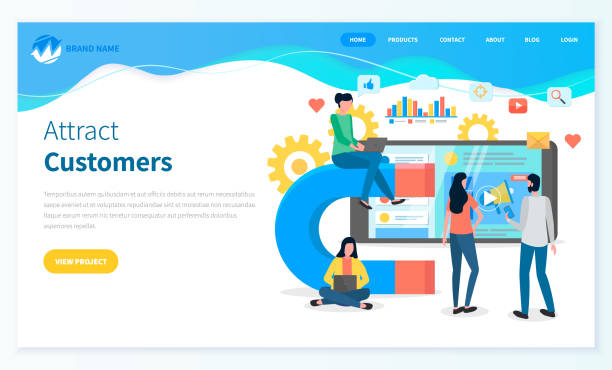
In the competitive world of e-commerce website design, User Experience (UX) and User Interface (UI) are considered two main pillars of success.
#UI (User Interface) refers to the visual appearance and feel of the site; including colors, fonts, images, icons, and overall layout.
A #beautiful_and_appealing_user_interface can create the first positive impression on a customer and encourage them to stay on the site.
But beauty without functionality is meaningless.
This is where #UX (User Experience) comes in.
User experience refers to the ease of use of the site, its efficiency, and the user’s overall satisfaction with interacting with it. Can the customer easily find the product they want? Is the payment process straightforward and without complications? Is the information presented clearly and understandably?
A poor UX can nullify even the most beautiful UI and cause customers to leave the site before completing their purchase.
Designing an e-commerce website with a focus on UX and UI means that every element and every process on the site must be designed with the needs and behaviors of the end-user in mind.
This includes responsive design for mobile, #high_loading_speed, #simple_navigation, #clear_call-to-action_buttons, and comprehensive and convincing product pages.
Investing in professional UX/UI design will directly lead to increased conversion rates, reduced bounce rates, and customer loyalty.
In fact, these two factors determine whether your visitor converts into a buyer or not.
Security in E-commerce Website Design: A Vital Necessity
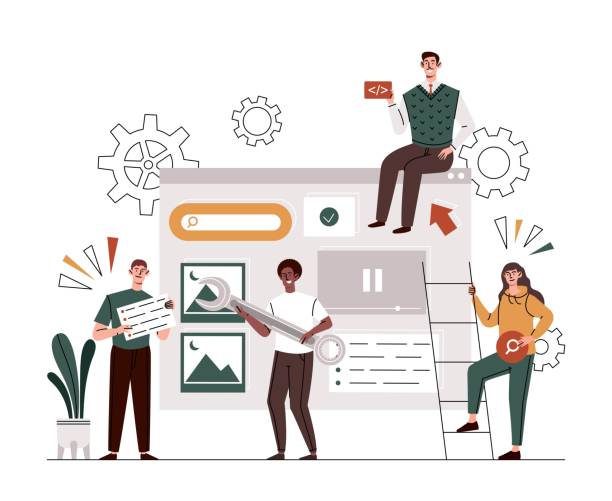
Security is one of the most important aspects that should never be overlooked in e-commerce website design.
Given that online stores process sensitive customer information such as personal details and credit card information, protecting this data is of paramount importance.
#Security_breaches can not only lead to significant financial losses but also severely damage your #brand_reputation and erode customer trust.
The first step in ensuring security is using an #SSL_certificate.
This certificate (displayed with the HTTPS protocol) encrypts the communication between the user’s browser and your website server, preventing information eavesdropping.
Choosing reputable and secure payment gateways that adhere to international security standards like PCI DSS is also essential.
Regular updates of the e-commerce platform, plugins, and themes to fix security vulnerabilities are other important measures.
Also, implementing #strong_firewalls (like WAF), #active_monitoring to identify suspicious activities, and regular data backups create additional layers of defense.
Educating the internal team on cybersecurity basics and adhering to security principles in site management is also crucial.
Ultimately, a secure e-commerce website design not only protects your business from cyberattacks but also significantly contributes to increasing sales and maintaining customer loyalty by building trust and confidence among customers.
Marketing and SEO for Your Online Store
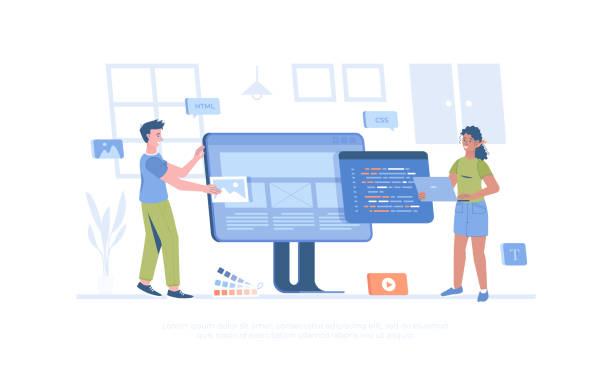
E-commerce website design is just the first step; for real success, you need marketing and Search Engine Optimization (SEO) strategies.
#SEO means optimizing your site to achieve higher rankings in Google and other search engine results.
This includes researching keywords relevant to your products, optimizing product descriptions, titles, meta descriptions, and internal link structure.
The goal of SEO is to increase organic (free) traffic to your site.
But marketing is not limited to SEO.
Content marketing through blogs, guides, and articles can increase your credibility and attract new audiences.
Email marketing is very effective for communicating with current customers and encouraging them to make repeat purchases, as well as for recovering abandoned shopping carts.
Paid advertising (such as Google Ads and social media advertising) can drive immediate and targeted traffic to your site.
Also, #active_presence on social media and running advertising campaigns on these platforms help increase brand awareness and customer engagement.
Finally, continuous analysis of data and user behavior with tools like Google Analytics helps you optimize your marketing strategies and achieve the highest return on your investments in advertising and SEO for e-commerce website design.
This comprehensive approach ensures the growth and sustainability of your online business.
Key Marketing Strategies for Online Stores
| Marketing Type | Description | Advantages |
|---|---|---|
| SEO | Optimizing for search engines to achieve high rankings in organic results. | Free and sustainable traffic, increased credibility. |
| Content Marketing | Producing valuable content (blog, video, infographic) to attract audience. | Lead generation, increased brand awareness, SEO improvement. |
| Email Marketing | Sending newsletters, discounts, and shopping cart reminders to email lists. | High conversion rate, customer loyalty, abandoned cart recovery. |
| Paid Advertising (PPC) | Using platforms like Google Ads and social media advertising. | Immediate and targeted traffic, budget control, precise tracking. |
Payment and Shipping in E-commerce Website Design
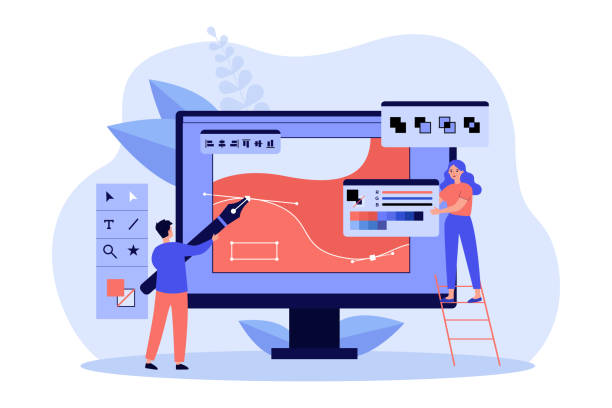
Successful e-commerce website design is not limited to displaying products; it must also manage post-purchase processes, especially payment and shipping, flawlessly.
Choosing the right payment gateway is one of the most important decisions.
Gateways must be secure, fast, and reliable, and support various payment methods (bank cards, e-wallets, etc.) so that customers can easily complete their purchases.
#Smooth_payment_experience plays a key role in reducing cart abandonment rates.
On the other hand, #logistics and #shipping are also fundamental pillars of an online store.
You must cooperate with one or more reputable postal companies to ensure that products reach customers on time and in good condition.
Offering various shipping options (such as standard shipping, express shipping, motorcycle courier) with different costs gives customers choice and increases their satisfaction.
A package tracking system that allows customers to track their order status is also a positive and essential feature.
Proper inventory management, appropriate packaging, and return policies are equally important.
A complete e-commerce website design considers all these details to create a pleasant and worry-free shopping experience for customers and lead to increased repeat purchases.
Did you know that 94% of the first impression of a company is related to its website design?
Rasawweb, by providing professional corporate website design services, helps you create the best first impression.
✅ Creating a professional and trustworthy image of your brand
✅ Easier attraction of potential customers and improvement of online presence
⚡ Get free consultation for corporate website design
Performance Analysis and Scalability of an Online Store

After designing and launching your e-commerce website, your work is not over.
In fact, the important phase of #performance_analysis and #scalability begins.
For long-term success, you must constantly monitor and analyze data.
Tools like Google Analytics allow you to track site traffic, user behavior, conversion rates, traffic sources, and many other key metrics.
Identifying pages with the highest bounce rates or products with the most views but fewest sales can provide valuable insights for #optimizing_your_store.
Scalability means that your online store must be able to adapt to your business growth, increased traffic, and order volume, without performance degradation.
This includes choosing a powerful and flexible hosting, using a CDN (Content Delivery Network) to speed up content loading, and a system architecture that can easily expand with more products and users.
Regular software updates, database optimization, and removal of unnecessary plugins also help maintain optimal performance.
Designing an e-commerce website with a scalability perspective is an investment for the future.
This analytical and forward-looking approach allows you to understand your store’s strengths and weaknesses, make data-driven decisions, and ensure that your online store is always ready to embrace growth and respond to changing market needs.
The Future of E-commerce and the Role of E-commerce Website Design

The future of #e-commerce is rapidly evolving, and with it, the role of #e-commerce_website_design is undergoing significant changes.
Technologies such as Artificial Intelligence (AI), Augmented Reality (AR), Virtual Reality (VR), and advanced personalization are reshaping the online shopping experience.
Imagine customers being able to virtually try on clothes or view furniture in their homes before buying; these are no longer dreams.
Artificial Intelligence is revolutionizing personalization, offering much more precise product recommendations and a completely unique user experience for each customer.
AI-powered chatbots can improve customer support and answer questions quickly.
E-commerce website design in the future must increasingly move towards creating #immersive_and_interactive_experiences.
#Very_high_speed, #flawless_security, and integration with wearables and the Internet of Things (IoT) will be among the key features.
Also, #sustainability_issues and #social_responsibility will play a more prominent role, and online stores must reflect these values in their design and operations.
These developments provide countless opportunities for businesses to not only remain competitive but also lead the market and define the #future_of_online_shopping through innovation in their e-commerce website design.
Frequently Asked Questions
| Row | Question | Answer |
|---|---|---|
| 1 | What is an e-commerce website? | It is a website that enables the online buying and selling of products or services, allowing users to view, select, and purchase products. |
| 2 | Why do we need e-commerce website design? | With an e-commerce site, businesses can reach a wider audience, operate 24/7, reduce operational costs, and increase their sales. |
| 3 | What are the main features of a successful e-commerce site? | Product catalog, shopping cart, secure payment gateway, order management system, user panel, product search and filter functionality, and responsive design. |
| 4 | What are the common platforms for e-commerce website design? | Common platforms include WordPress (with WooCommerce plugin), Shopify, Magento, PrestaShop, or custom development (coding from scratch). |
| 5 | What is the importance of User Interface (UI) and User Experience (UX) in e-commerce website design? | Proper UI/UX design improves customer experience, reduces bounce rate, increases user session duration, and ultimately boosts conversion rates and sales. |
| 6 | What are the key steps in designing an e-commerce website? | These steps include planning and research, UI and design, technical development and coding, content entry, testing and debugging, launch, and support. |
| 7 | What is the importance of security in e-commerce sites? | Security is crucial for protecting sensitive user information (like payment and personal data) and building customer trust. Using an SSL certificate and secure payment gateways is essential. |
| 8 | What does SEO mean for an e-commerce site? | It means optimizing the site for search engines like Google so that product and category pages appear higher in search results and attract more organic (free) traffic. |
| 9 | What is the role of payment gateways in an e-commerce site? | A payment gateway is the bridge between the customer and the bank, enabling secure and online financial transactions and transferring money from the customer’s account to the seller’s account. |
| 10 | What does Responsive Design mean for an e-commerce site? | It means that the e-commerce site should display correctly and be easy to use on any device (mobile, tablet, laptop) without losing information or visual disarray. |
And other services of RasaWeb advertising agency in the field of advertising
Smart Link Building: An effective tool for user engagement through user experience customization.
Smart Advertorials: Professional optimization for customer behavior analysis using marketing automation.
Smart Social Media: Revolutionize campaign management by optimizing key pages.
Smart Link Building: Professional optimization to increase site visits using precise audience targeting.
Smart Google Ads: Revolutionize user engagement with smart data analysis.
And over hundreds of other services in the field of internet advertising, advertising consultation, and organizational solutions
Internet Advertising | Advertising Strategy | Advertorial
Sources
? To reach the pinnacle of success in the digital space, Rasawweb Digital Marketing Agency is with your business, offering specialized services such as SEO-optimized website design.
📍 Tehran, Mirdamad Street, next to Bank Markazi, Kazeroon Jonubi Alley, Ramin Alley, No. 6


